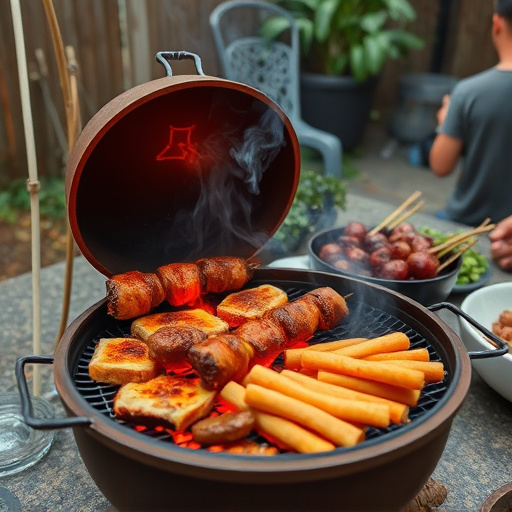Creating the perfect BBQ beef jerky involves selecting lean cuts of sirloin or round steak for even cooking and chewy texture. Seasoning with salt, pepper, garlic powder, paprika, and BBQ spices enhances flavor and preservation. Marinate strips in a mixture of liquid and seasonings, then dry using an oven, dehydrator, smoking gun, or cold smoker for 6-8 hours at 150°F (66°C). Store the jerky airtight at room temp or freeze for up to 3 months. Customize flavors with chili powder, brown sugar, or herbs for unique blends.
“Elevate your snacking game with a homemade BBQ beef jerky that delivers the perfect smoky twist! This comprehensive guide takes you on a journey from choosing the ideal cut of meat to mastering the art of drying. Learn how to infuse rich barbecue flavors with unique seasoning blends and create a smoky environment for an unforgettable taste experience. Discover safe storage tips, explore variations, and craft your signature BBQ jerky recipe – all without stepping foot in a restaurant. Get ready to satisfy your cravings and impress your friends!”
- Choosing the Right Cut of Meat for Your BBQ Jerky
- Seasoning and Marinade: Infusing Flavors with Smoky Barbecue Spice
- The Art of Drying: Techniques to Achieve the Perfect Texture
- Creating a Smoky Environment: Methods for that Extra Flavor Kick
- Tips for Safe and Proper Storage of Your Homemade BBQ Jerky
- Variations and Customization: Experimenting with Different Flavors and Spices
Choosing the Right Cut of Meat for Your BBQ Jerky
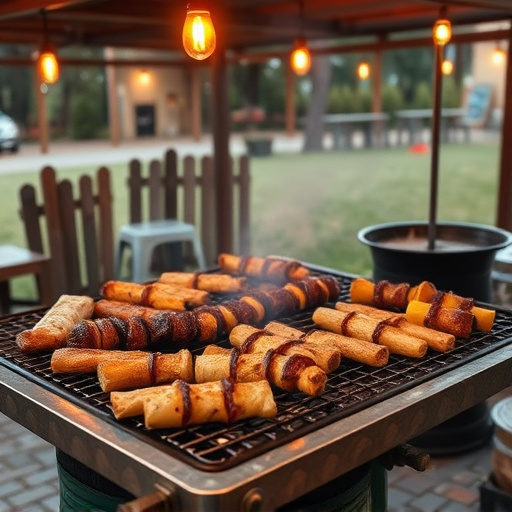
When crafting your perfect BBQ beef jerky recipe, selecting the ideal cut of meat is a crucial first step. Opt for lean cuts like sirloin or round steak, as they will ensure your jerky turns out tender and delicious, without being too fatty. These cuts have less marbling, which means there’s less moisture content, resulting in a chewier texture—perfect for jerky!
The right cut should be relatively uniform in thickness to ensure even cooking. This way, you can say goodbye to overcooked or raw spots in your BBQ jerky. Consider cutting the meat against the grain to make it easier to chew and guarantee a satisfying, smoky barbecue experience with every bite.
Seasoning and Marinade: Infusing Flavors with Smoky Barbecue Spice

When crafting your homemade BBQ beef jerky with a smoky barbecue twist, the key lies in the seasoning and marinade. Start by combining a generous amount of salt, pepper, garlic powder, paprika, and your preferred BBQ spice mix. This blend will not only enhance the savory taste but also help preserve the meat. For a truly authentic barbecue experience, consider adding a touch of smoked paprika, which infuses a subtle smoky flavor that complements the jerky’s texture.
Next, prepare a marinade by mixing together your chosen liquids—such as soy sauce, apple cider vinegar, or beef broth—with a portion of the seasoning mix. The marinade should coat each strip of meat evenly. Allow the meat to sit in the marinade for several hours or even overnight in the refrigerator. This step is crucial for the flavors to penetrate deeply into the beef, creating a rich, complex taste that makes it a standout BBQ jerky recipe.
The Art of Drying: Techniques to Achieve the Perfect Texture
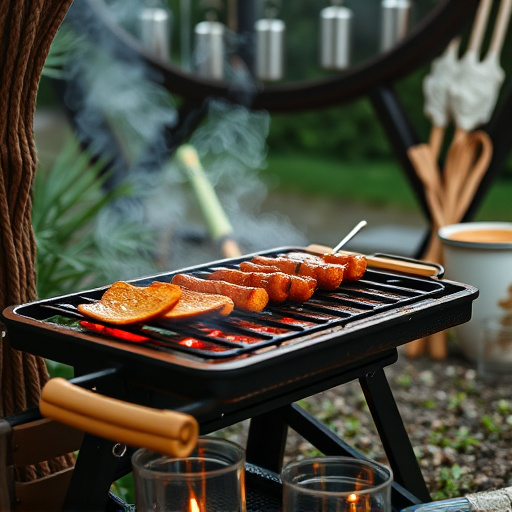
The art of drying is a crucial step in creating homemade BBQ beef jerky that rivals store-bought varieties. It’s all about achieving the perfect balance of texture—a delightful blend of tender meat and satisfying crunch. Traditional methods involve using an oven or dehydrator, but for a smoky barbecue twist, an alternative approach is to utilize a smoking gun or cold smoker. This technique infuses the jerky with the distinct flavors of wood smoke, adding depth and complexity to your BBQ beef jerky recipe.
Controlling temperature and humidity is key. Low and slow is the mantra for most smoking recipes, allowing the fat in the meat to render gradually while ensuring the protein fibers tighten, resulting in a chewy yet tender texture. Experimenting with different woods can also impart unique flavors, from hickory to applewood, each adding its own character to your jerky creation.
Creating a Smoky Environment: Methods for that Extra Flavor Kick
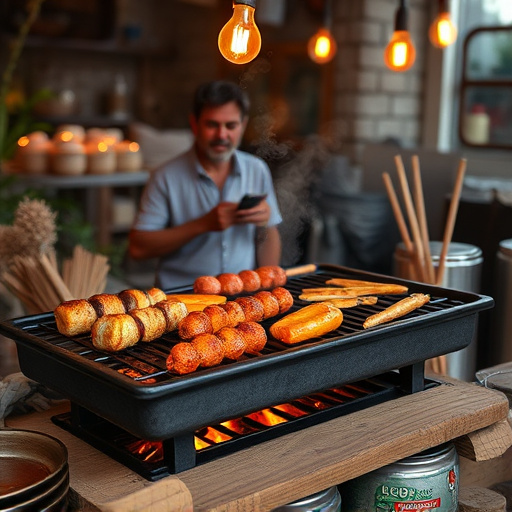
Creating a smoky environment is key to infusing your BBQ beef jerky recipe with that extra flavor kick. One popular method involves using a smoker, which allows for low and slow cooking over wood chips or chunks, imparting a rich, smoky taste. For an easier approach, you can use a grill with a chimney starter loaded with your favorite hardwood pellets. This method quickly generates intense heat and smoke, adding depth to the jerky’s flavor.
Alternatively, you can simply add liquid smoke to your marinade or braine mix. Liquid smoke is a concentrated form of smoke flavor that seamlessly blends into marinades, ensuring every bite of your homemade jerky tastes like it’s straight off the grill. Experiment with different types of wood chips or pellets – hickory, mesquite, applewood, and cherry – for varied smoky profiles to suit your taste preferences.
Tips for Safe and Proper Storage of Your Homemade BBQ Jerky
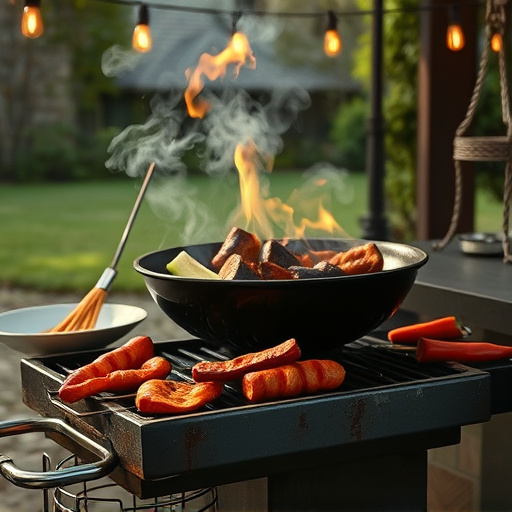
When storing your homemade BBQ beef jerky recipe, it’s crucial to maintain optimal conditions to ensure safety and longevity. Keep jerky in an airtight container or sealed bag at room temperature, away from direct sunlight and heat sources. This prevents moisture buildup and bacterial growth. For long-term storage, consider the freezer; it’ll extend shelf life significantly. Make sure your container is well-sealed to avoid freezer burn.
Frequently check for signs of spoilage, such as unusual odors or mold. Since jerky is a dehydrated product, it has a longer shelf life compared to fresh meat. However, store-bought jerky typically has specific best-by dates. Stick to these guidelines to guarantee the best quality and safety when enjoying your homemade BBQ beef jerky recipe.
Variations and Customization: Experimenting with Different Flavors and Spices
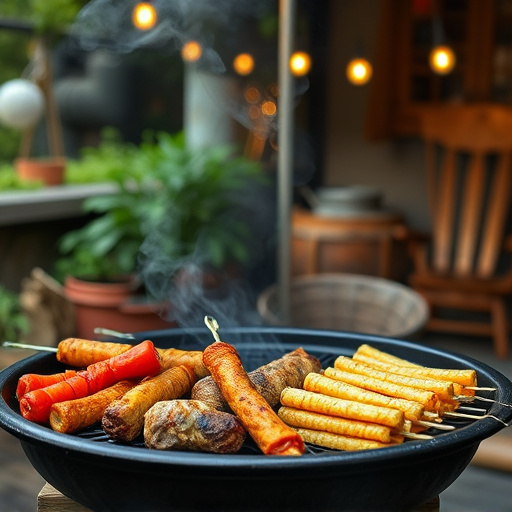
When it comes to crafting your perfect BBQ beef jerky, customization is key. The traditional smoky flavor of barbecue provides a solid foundation, but feel free to experiment with various spices and seasonings to create unique tastes. Consider adding a touch of heat with chili powder or cayenne pepper for a spicy kick. For a sweeter option, incorporate brown sugar or maple syrup alongside classic BBQ seasonings. Even herbs like rosemary or thyme can impart delightful aromas and flavors.
Mixing and matching these ingredients allows you to tailor the jerky to your preference, making each batch a delightful adventure. Remember, the beauty of a DIY BBQ beef jerky recipe is the ability to get creative while still enjoying a classic snack. So, don’t be afraid to get adventurous and discover your signature blend!
